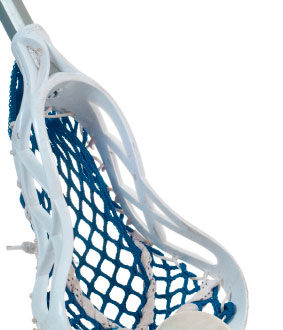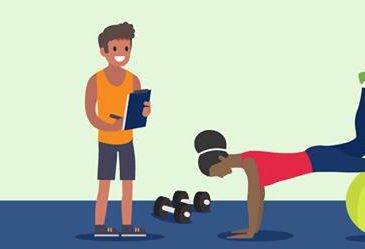
To play lacrosse successfully, you need physical qualities, such as strength, endurance, quick-as-a-cat agility, flexibility, and quickness. In this article, you’ll discover how to improve these qualities and how to get into shape to be a better lacrosse player (hopefully, so you’ll stay injury-free — injuries can make or break a season).
Lacrosse players are among the fittest athletes in the world. They must have speed and quickness, plus strength in their upper body to take all the pounding in a box lacrosse game, whether it’s a cross-check, a body check, or a crunch into the boards. You should do your best to be in game-ready shape when your team gathers to start workouts for an upcoming season. These training camps don’t always focus on getting into shape; instead, they concentrate on skills and team play.
Here are a few more things to keep in mind as you get in playing shape:
- No rest for the weary, so train to minimize weariness. The nature of a lacrosse game consists of endurance running, short bursts of speed, stop-and-start running with high intensity, and a lot of body and stick contact thrown in, with only brief rests on the bench while waiting for your next shift.
- Practice sprint marathoning. Lacrosse players have to run shorts bursts of speed over a long period of time, so players have to train for both types of running.
- Even a flat surface has its ups and downs. In a lacrosse game, if you’re in shape, you feel like you’re running downhill; if you’re not in very good shape, the game feels like drudgery, and you feel like you’re running uphill.
STRETCHING TO BE YOUR BEST
As with any physical conditioning, your best workout is only as effective as your best pre-workout stretch. Stretching helps to reduce strains, sprains, spasms, and the muscle tears that happen when muscles are tight and inflexible. Stretching also helps prevent injuries common to running, such as pulled muscles, shin splints, hamstring pulls, ankle sprains, pulled groins, and Achilles tendonitis. Stretching before and after practices and games will keep you flexible — it reduces muscle tension by increasing your range of motion, which makes you a better lacrosse player.
RUNNING
You have to run both long and short distances in lacrosse. All that running requires you to stay in running shape with long-distance conditioning, spring conditioning to increase speed, and endurance training. While you can run for game-shape conditioning at any time during the year, long-distance and endurance training are best reserved for the off-season or during preseason training, and conditioning for speed is ideal for in-season workouts.
Usually, a good long distance run lasts from 12 to 15 minutes. To increase speed efficiency, stress short strides to begin with, starting with running on your toes and the middle of your foot, but then generate more speed by opening up your stride (thus increasing your stride length and moving your legs faster).
WEIGHT TRAINING
Strength is one of the keys to success in lacrosse, and strength can be best developed through a properly organized weight-training program. Players are hit into the boards going after loose balls; they are cross-checked hard across their upper body and arms to stop them from going to the net; they are slashed by a lacrosse stick to steal the ball; they are stopped from cutting into the middle of the floor to score. In all these situations, weight training will help players improve their performance by increasing their endurance, their flexibility, their agility, their running speed, and their overall physical strength. Weight training also helps to prevent injuries.
As with any training that you take on, keep a record or chart to gauge your progress, as well as to motivate you to greater heights.
MENTALLY PREPARING FOR LACROSSE
Being in game-shape includes a mental challenge for lacrosse players. You should be able to stay in The LAX Zone that encourages great performance. Here are a few tips to get started:
- Be positive. Lacrosse is, after all, a game, and your mental attitude toward it should be a positive one. Remember, too, that it’s easy to stay positive when you’re winning; the tough part is staying positive after losing or after making mistakes. It’s all part of the lacrosse learning curve.
- Accept the challenge. Look forward to each upcoming game, to the challenge of the opponent (both your team’s opponent and any particular individual opponent you have in mind), and to the fundamentals of the conflict ahead.
- Plan for success. Find a lacrosse player who anticipates that each game will be a good game, and you’ll find a successful lacrosse player.
- Use your nervousness. You should try to calm and quiet your mind before the game. However, it’s also okay to feel a little bit nervous. Use your nerves to help you get physically energized and ready to play; let your mind keep things loose.
- Have fun. Lacrosse is a game. Enjoy yourself.
The result of these good feelings is that you get into The LAX Zone. Being in The LAX Zone means that you play alert and can anticipate things before they happen — all the activity around you seems to happen in slow motion. Your mental focus is totally absorbed in playing the game and blocking out all distractions. You play with self-confidence, and you’re emotionally controlled. Being in the zone helps you play the game effortlessly, and you react by instinct.






